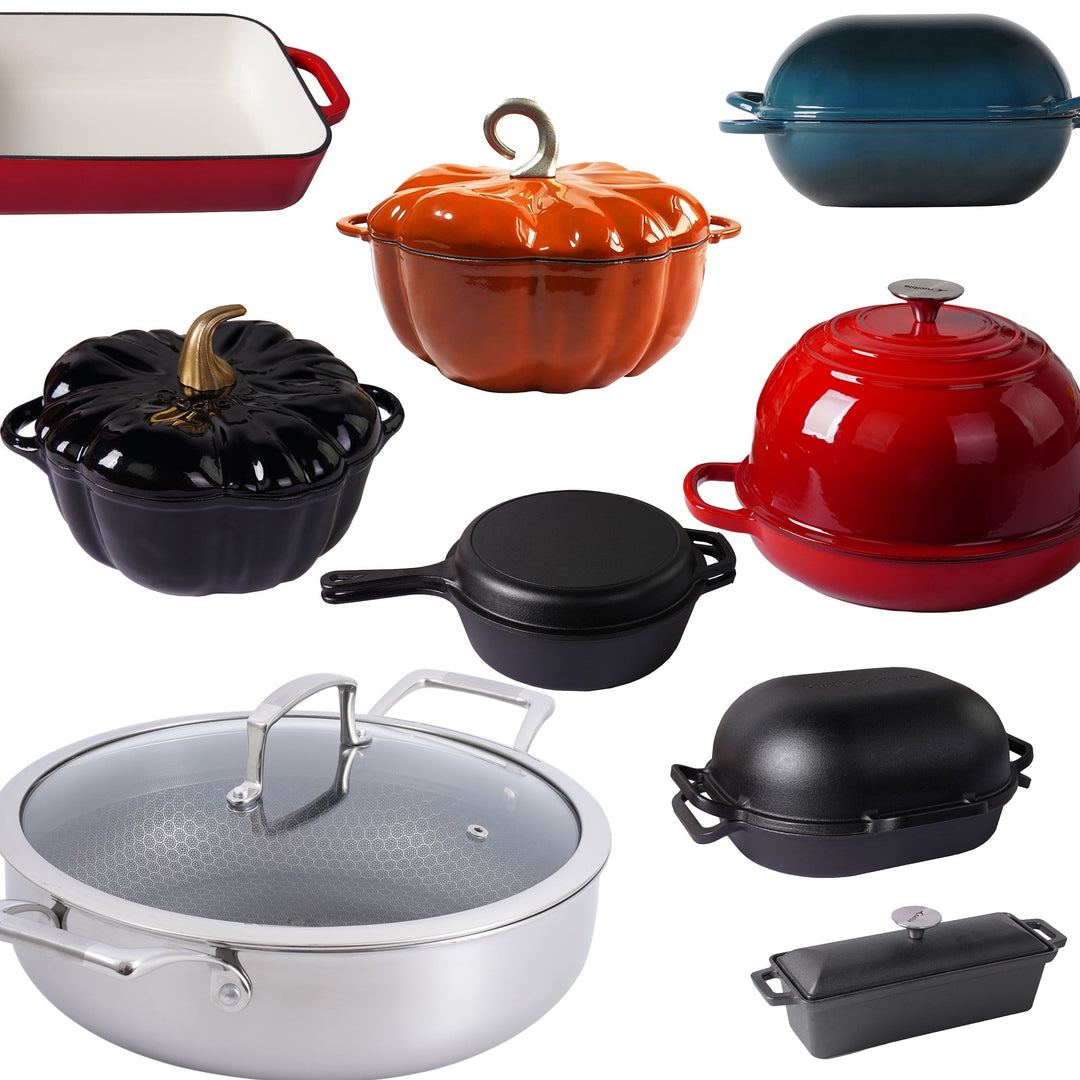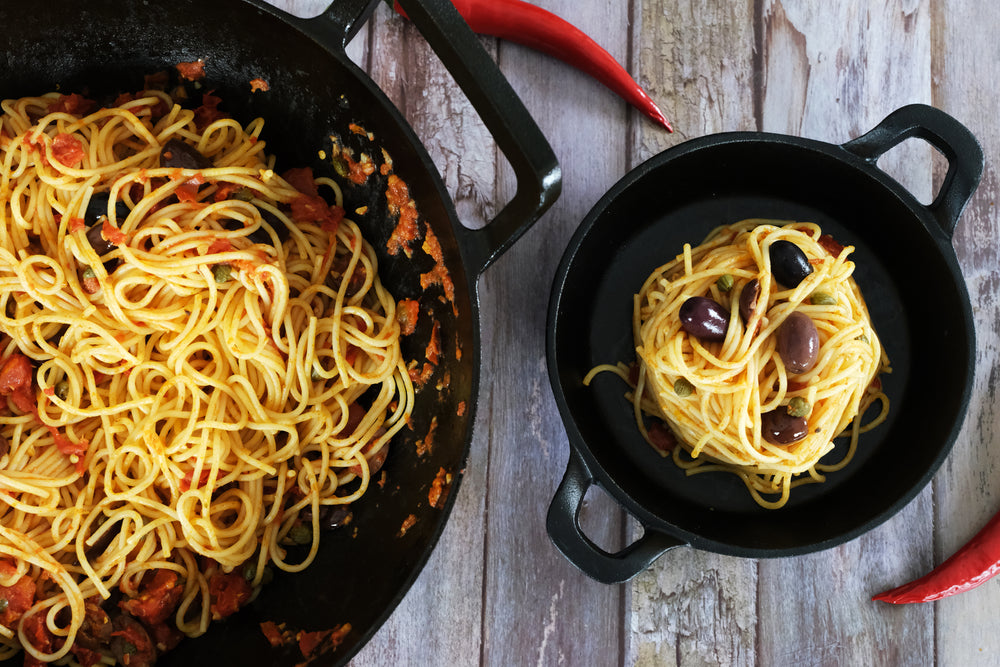Dökme Demir Tencere Yağlama Bilimi: İpuçları ve Teknikler

Mutfak eşyaları söz konusu olduğunda, dökme demir kadar sevilen ve çok yönlü az parça vardır. Dökme demir mutfak eşyalarınızın tam potansiyelini açmanın anahtarı doğru yağlamadır. İster deneyimli bir şef olun ister ev aşçısı, yağlamanın arkasındaki bilimi anlamak ve tekniği ustalıkla uygulamak, pişirme deneyiminizi dönüştürebilir. Bu yazıda, dökme demirin yağlamasının temel unsurlarını inceleyecek, kullanılacak en iyi yağları keşfedecek ve dökme demir mutfak eşyalarınızın en iyi durumda kalmasını sağlamak için adım adım bir rehber sunacağız.
Yağlama Nedir?
Yağlama, dökme demir mutfak eşyalarınız üzerinde yağın uygulanması ve polimerizasyonu yoluyla koruyucu bir tabaka oluşturma sürecidir. Bu tabaka sadece paslanmayı önlemekle kalmaz, aynı zamanda mutfak eşyalarına yapışmaz özellik kazandırır ve çeşitli pişirme görevleri için ideal hale getirir. Dökme demir tavada yağı ısıttığınızda, kimyasal bir dönüşüm geçirir, yüzeye bağlanır ve dayanıklı, pürüzsüz bir kaplama oluşturur. Bu, dökme demirinizin uzun ömürlü ve performanslı kalması için gereklidir.
Yağlama için Doğru Yağı Seçmek
Yağlama için kullandığınız yağ türü çok önemlidir, çünkü farklı yağların farklı dumanlanma noktaları vardır. Dumanlanma noktası, yağın bozulmaya ve duman çıkarmaya başladığı sıcaklıktır ve yağlama sürecinde temel bir faktördür. İşte yağlama yağı için bazı en iyi seçenekler:
- Keten Tohumu Yağı: Yüksek dumanlanma noktası ve polimerizasyon özellikleriyle bilinen keten tohumu yağı, birçok dökme demir meraklısının favorisidir.
- Bitkisel Yağ: Kolay bulunabilir ve uygun fiyatlı olan bitkisel yağ, yağlama için güvenilir bir tercihtir.
- Kanola Yağı: Yaygın bir ev yağı olan kanola yağı, dökme demir yağlaması için uygun bir duman noktasına sahiptir.
- Üzüm Çekirdeği Yağı: Yüksek duman noktası ile üzüm çekirdeği yağı, sağlam bir yağlama tabakası oluşturmak için mükemmeldir.
Dökme Demir Mutfak Eşyalarının Yağlanması İçin Adım Adım Rehber
-
Tavayı İyice Temizleyin: Dökme demir tavanızı fabrika kaplamalarını veya pası çıkarmak için sıcak, sabunlu suyla ovalayarak başlayın. Tamamen bir havluyla kurulayın.
-
Yağı Uygulayın: Bir bez veya kağıt havlu kullanarak, seçtiğiniz yağdan ince ve eşit bir tabakayı tavanın tüm yüzeyine, sapına ve dış kısmına uygulayın.
-
Tavayı Isıtın: Yağlanmış tavanızı 450-500°F (232-260°C) önceden ısıtılmış fırına ters çevirerek yerleştirin. Damlaları yakalamak için alt rafına bir alüminyum folyo koyun.
-
Pişirin ve Tekrarlayın: Tavanızı bir saat pişirin, sonra fırını kapatıp tavanın içinde soğumasını bekleyin. En iyi sonuçlar için bu işlemi 2-3 kez tekrarlayarak güçlü bir yağlama tabakası oluşturun.
Yağlamanın Korunması
Dökme demir mutfak eşyalarınızı en iyi durumda tutmak için şu bakım ipuçlarını izleyin:
- Temizlik: Sabun kullanmaktan kaçının. Bunun yerine, tavanızı sıcak su ve sert bir fırça veya plastik bir kazıyıcı ile temizleyin. Yapışan yiyecekler için aşındırıcı olarak iri tuz kullanın.
- Kurutma: Paslanmayı önlemek için tavanın hemen iyice kurutulması gerekir.
- Yağın Yeniden Uygulanması: Her kullanımdan sonra, yağlamayı korumak için ince bir yağ tabakası uygulayın. Yağın bağlanmasına yardımcı olmak için tavanın kısa süre ısıtılması gerekir.
Yaygın Hatalar ve Bunlardan Kaçınma Yolları
- Çok Fazla Yağ Kullanmak: Fazla yağ yapışkan bir yüzeye neden olabilir. Her zaman ince, eşit bir tabaka uygulayın.
- Yeterince Isıtılmaması: Tavanın yağın düzgün polimerize olmasına izin verecek kadar ısıtıldığından emin olun.
- Bakımı Atlamak: Düzenli bakım çok önemlidir. İhmal edilmesi paslanmaya ve yapışmaz özelliklerin kaybına yol açabilir.
Sonuç
İyi yağlanmış dökme demir tava, eşsiz pişirme performansı ve uzun ömür sunan bir mutfak işçisidir. Yağlama bilimini anlayarak ve doğru teknikleri uygulayarak, dökme demir mutfak eşyalarınızın yıllarca mükemmel durumda kalmasını sağlayabilirsiniz.
Daha fazla kaynak:
















Yorum bırak